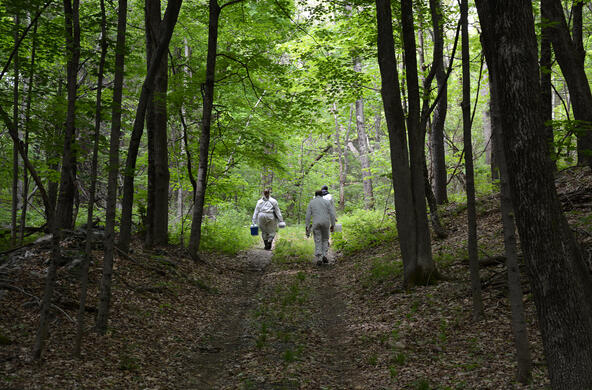There has been a run of recent news about other tickborne diseases. If you are someone who loves the outdoors — or even, you know, your back garden — it's important to pay attention to such research, because these diseases are just becoming known and thus are often not recognized by physicians. Which means, of course, that someone who has the misfortune to contract one might be misdiagnosed, might be given antibiotics that won't work against the organism, or might even be dismissed as malingering.
The most recent and saddest piece of news: Joseph Osumbe Elone, a 17-year-old high school student from Poughkeepsie, NY, died earlier this month from what is believed to have been an infection with Powassan virus, one of these lesser-known tickborne diseases. According to his family, he had been mildly ill for several weeks, with a cough but no striking symptoms, and collapsed and died Aug. 4.
Concern about Powassan has been building for a while, but as an emerging infection it is well below the radar of even medical specialists. Consider the experiences of two patients that are related in a just-published ahead-of-print article in the CDC's journal Emerging Infectious Diseases. One patient, a 22-year-old man who was in college in Colorado but whose family lived in Long Island, New York, was sick for three months in 2008 and 2009 with increasingly serious neurologic symptoms, beginning with fever and a stiff neck and proceeding to confusion and difficulty speaking and walking. Even after he was correctly diagnosed and treated, the difficulty with speaking remained. The second patient in the paper, a 34-year-old man from New York State who was married with two toddlers, was first admitted to a hospital in May last year with "lower extremity weakness and altered mental status of unclear etiology," which must have been terrifying to his family. His recovery took several months of treatment, including one serious relapse, forcing him to use a rolling walker; even 10 months later, he hadn't regained full strength in his legs.
In neither of those cases was Powassan virus immediately suspected as the cause of the men's illness, but a paper published last month by a team at the Cary Institute of Ecosystem Studies in New York illustrates that the disease is more common than realized. The group's 5-year study of ticks in areas that were already known as hotspots for Lyme disease demonstrated that up to 6 percent of ticks from the species that also transmits Lyme were also carrying deer tick virus, one of the two main types of Powassan. Rick Ostfeld, one of the authors, told MedPage Today at the time: "The infection prevalence of about 1% to 6% among these ticks is low compared with Lyme disease, which often is found in 30% to 50% of ticks, but it's still alarmingly high."
That paper points out additional reasons to be concerned about Powassan: Unlike Lyme, which can take hours to pass from the feeding tick to the person it is biting, Powassan viruses can be transmitted within 15 minutes of a bite. The mortality rate from Powassan infection is 10-15 percent, and survivors — as in the two cases recounted above — frequently have longterm neurological damage.
But wait, there's more. At almost the same time as the Powassan news above, another research group was announcing new findings on a different tickborne illness, which also makes people very sick. (I told the story of the first two cases in this post last year; they both recovered, but it took a long time for them to be correctly diagnosed.) What was making them ill was a never-seen virus, subsequently dubbed Heartland virus for Heartland Regional Medical Center in St. Joseph, Mo., where they were treated. Both men had reported being bitten by ticks, and the assumption at the time was that their infections had been transmitted during those bites.
The new news is that a team from Missouri Western State University confirmed last month that Heartland virus — which may be related to a very serious tickborne illness found in China, severe fever with thrombocytopenia — is in fact carried by ticks. Writing in the American Journal of Tropical Medicine and Hygiene, they describe collecting 56,428 ticks at 12 sites in the area, including farms where each of the men lived. One virus they isolated from the pooled ticks was 97.6 percent the same, in its genetic sequence, as the virus recovered from the men: the new Heartland virus.
And if that's not enough: In a third piece of research, published back in July in the Annals of Internal Medicine, physicians from Massachusetts and New Jersey described two unrelated patients who came into their hospitals very ill and were both initially misdiagnosed and given antibiotics that did not work for their infections. The correct diagnosis that was eventually realized for both cases was yet a third new, little-understood tickborne illness, caused by a relative of the Lyme bacterium known as Borrelia miyamotoi. A companion editorial described the history of the disease's emergence: Researchers know what they about this illnesses based on a few cases in Japan, a few dozen in Russia, and now a few in the United States, including these two. It is quite possible that other cases exist but, like the patients in this paper, were not correctly diagnosed.
Summer's ending, kids are going back to school, and people are spending less time outside. Given all this research, maybe that's a good thing.







